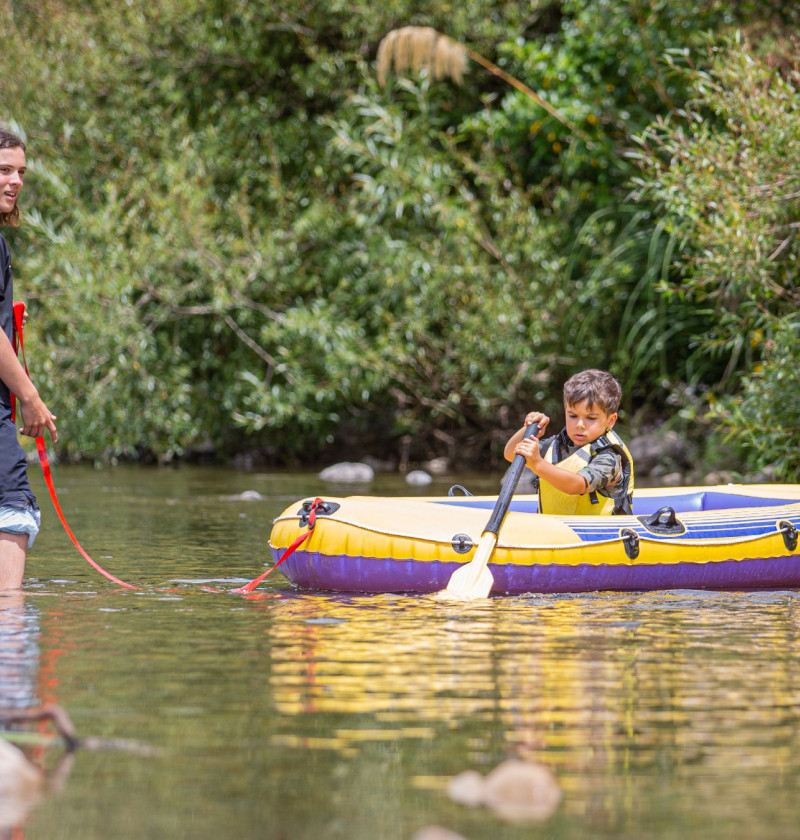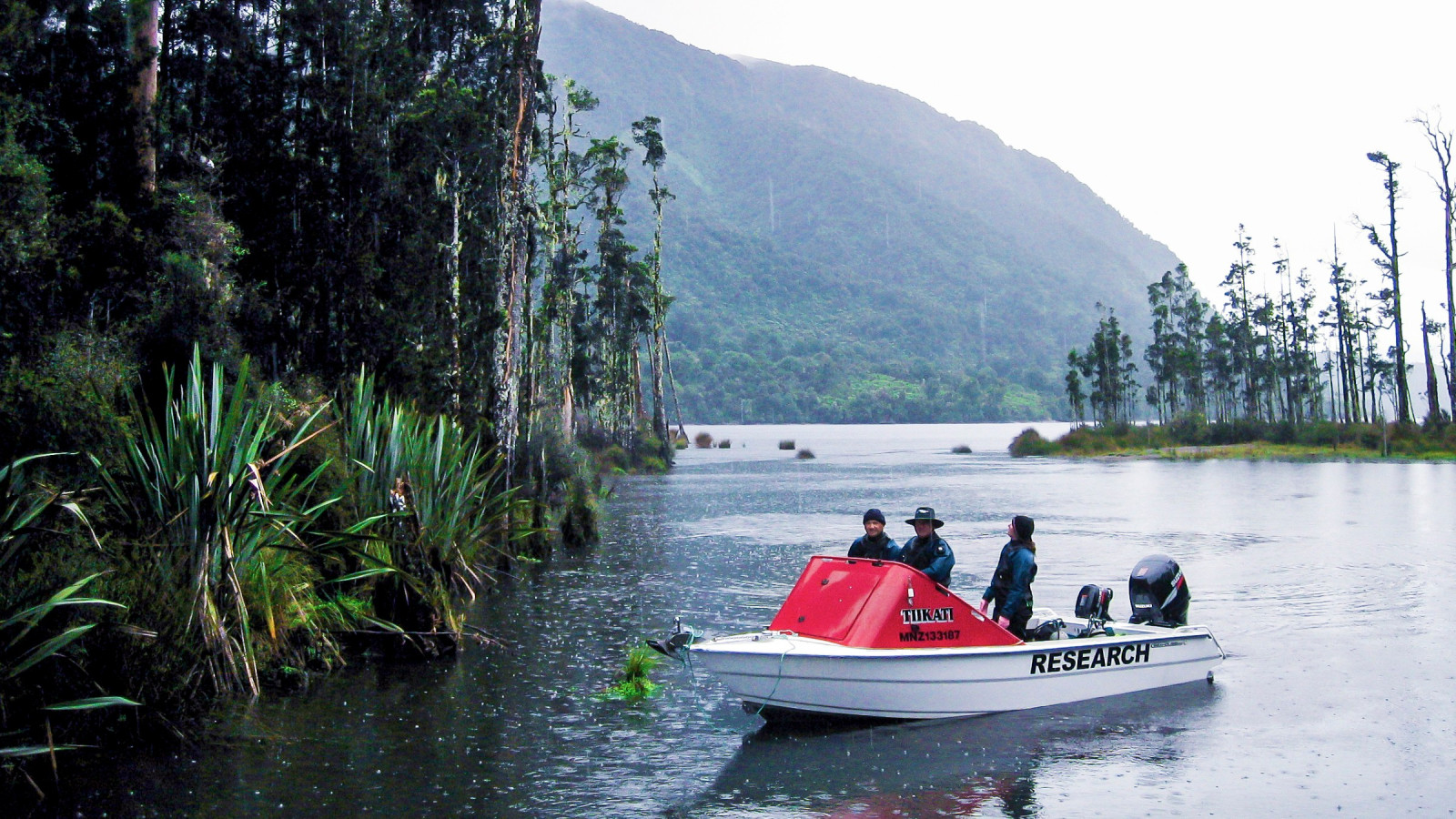Towards a better understanding of our environment

The purpose of environmental reporting is to provide evidence to enable an open and honest conversation about those choices.

Image: John Clayton, NIWA
We face important choices about how to manage and respond to the combined impacts of our activities on the freshwater environment – including the consequences of climate change. When we understand our environment, we can manage it better by making decisions and adjusting our actions to reduce their negative impacts, stop further declines, and respond to unanticipated changes.
The data and science presented in this report is the best available. It has been both rigorously checked and peer reviewed. Inevitably gaps remain – and we continue to advance knowledge and fill them – but the gaps should not stymie or postpone action. Work is also underway to collect evidence to inform national policy statements and national environmental standards, and in time this evidence will also be available to support environmental reporting.
In his 2019 review of the environmental reporting system, the Parliamentary Commissioner for the Environment noted, “If there is one thing that stands out from the first cycle of reports, it is the extent of what we don’t know about what’s going on with our environment.” This report would be remiss if it focused only on reiterating the knowledge gaps that have been identified in previous reports. Instead, this section builds on the recommendations made in Environment Aotearoa 2019 and highlights where future efforts should be targeted and where current initiatives signal hopeful advances.
Government agencies (including regional councils) are working together to develop a national environmental monitoring and reporting system, and a strategy to prioritise and fill important knowledge and data gaps. This needs time and investment, and will require addressing inconsistencies, bridging knowledge gaps, and listening to the voice of te ao Māori (as discussed below).
The commissioner wrote, “When data is collected, attempts to construct a national-level picture can be thwarted because of inconsistencies in what, why, when and where something is measured.”
Environmental data is collected for different reasons and by different people. Aggregating and synthesising that data to produce a consistent, nationally-representative dataset (and therefore assessment of the environment) is a significant challenge.
Consistency in data collection must continue to be a priority for monitoring and reporting on freshwater. Attempts to address systemic issues are underway in the form of the National Environmental Monitoring Standards that focus on developing standards for measured data. To date, a number of different standards and codes of practice have been developed, but more are needed (for recreational water quality, for example).
Our freshwater environment is a complex system where everything is connected. From the soils, rivers, lakes, wetlands, and groundwater to the plants and animals, and the people who live there. Both natural and human influences affect how water moves among these elements. Climate change is another influence – it is already affecting how much, when, and where rainfall, snowfall, and drought occur. Together, this dynamic combination makes it difficult to establish how our actions in one place affect other parts of the freshwater system over different time and spatial scales.
Knowledge is essential for unravelling this complexity and targeting what needs to be measured, how measures should be interpreted, and how to look ahead for the future. In our dynamic environment with emerging risks and new technologies, knowledge is also needed to advise what new data needs to be collected to keep pace with and anticipate change.
Te ao Māori, a Māori world view, has a fundamental contribution to make to environmental reporting and environmental stewardship. Mātauranga Māori is a dynamic and evolving knowledge system that has qualitative and quantitative aspects. It also includes processes for acquiring, managing, applying, and transferring the knowledge it holds.
Mātauranga Māori has great potential for providing a system-wide view of the environment and people together. It offers a knowledge system that embraces the connectivity and complexity of freshwater as highlighted in Stepping into freshwater including the:
When mātauranga Māori is used to inform reporting, appropriate emphasis must be given to information that is useful to Māori. This includes information about the state of taonga species and environmental resources, which is a commitment made by the Crown through the Treaty of Waitangi.
Bringing a stronger te ao Māori voice and using mātauranga Māori more centrally in environmental reporting must also ensure that Māori knowledge is respected, valued, and properly acknowledged. The need for appropriate long-term investment to build capacity and capability is also recognised.
Given the complexity of the environment and the number of gaps, the only practical way forward is to address gaps progressively or to target specific gaps.
Previous environmental reports (like Environment Aotearoa 2019 and Our marine environment 2019) documented the priority knowledge gaps. In his 2019 review, the Parliamentary Commissioner for the Environment also recommended looking at past efforts (such as the Environmental domain plan 2013), using existing initiatives (like the Government’s Data Investment Framework), and bringing in expertise from iwi and hapū, local and central government, and Crown research institutes.
At present, the environmental reporting system is based on what we know and what we already have. The Ministry for the Environment has initiated work to create a more integrated monitoring and reporting system as outlined in Environment Aotearoa 2019. This cross-sector initiative aims to set direction and agree some initial priorities such as core environmental indicators to start filling critical gaps in science, research, and data.
The basis of any prioritisation must also relate to the purpose of environmental reporting, which is to provide evidence on:
To do this properly requires data that is measured at an appropriate scale to determine cause and effect relationships, and that is frequent and long term enough to enable issues and trends to be tracked over time. Data and knowledge is also needed for te ao Māori, to bridge the gap between people and place, and to understand the connections between the environment and our wellbeing.
How we could approach this task is set out in table 2.
| Purpose of evidence | What we need to know | Examples of priority gaps |
|---|---|---|
| What we have (in the freshwater environment) | Assess and monitor the extent, condition, trends, and ecological integrity (completeness) of freshwater habitats. |
|
| What we are at risk of losing (in the freshwater environment) | Understand and quantify the benefits of freshwater, including on wellbeing. |
|
| Understand rates of change and tipping points in freshwater so research and response work can be prioritised according to urgency. |
|
|
| Where and how we can make enduring change (in our activities) | Improve our understanding of the pressures on freshwater and their causes, including how they interact and intensify in places and over time. |
|
| Characterise the connections between the health of the freshwater environment and past, current, and future land uses in the short and long term. |
|
|
| Investigate how mātauranga and tikanga Māori can help make change. |
|
|
| Understand how to build social cohesion and readiness for change. |
|
The evolution of environmental reporting is already underway. Each successive report in New Zealand’s Environmental Reporting Series draws on data and knowledge that is more comprehensive and complete, as well as knowledge that is gradually enabling us to identify trends and focus our stewardship of the environment in the right places.
Worldwide, technology is advancing rapidly and offering step-changes in how we collect and analyse data. This includes new technologies such as aerial electromagnetic technologies to collect high-resolution data related to aquifers: where they are fed from, how they behave, and where they flow to. Land Information New Zealand is leading work to generate nationally consistent, highresolution topography data through laser surveys (LiDAR). Smart sensors are being used to remotely capture data and monitor change, including multispectral cameras that monitor streams for algae. Remotely operated vehicles can observe changes in lakes and their shorelines, and satellite remote sensing can determine the colour of a lake or changing land use during the year.
Citizen science, where the public contributes to data collection and analysis (usually through the internet), has also extended our ability to gather data and monitor change. Examples include the Whitebait Connection that collects indicators to assess and monitor the health of streams, rivers, lakes, and wetlands, and NIWA’s Fish Passage Assessment Tool where in-stream structures that could be barriers to fish are mapped across New Zealand.
Freshwater ecosystems are complex, with water chemistry, water quality, physical habitats, different species, and diverse processes all interacting with one another. Environmental indicators offer a way of simplifying this complexity by measuring what is happening in specific parts of the environment. The concentrations of nitrogen, phosphorus, and sediment for example, are indicators that point to aspects of water quality in our rivers and lakes.
To understand a whole ecosystem requires an integrated measurement system that reflects its complexity, dimensions, and dynamics. The Ministry for the Environment’s Framework for Assessing Biophysical Ecosystem Health (Clapcott et al, 2018) can help identify indicators and begin to understand how they fit together, as well as identifying data gaps. The framework requires testing to finalise how specific measures are integrated, so it is not currently used in environmental reporting. It does provide a glimpse into how reporting on the environment as a system could be achieved in the future.
Advanced modelling is improving our understanding of overlapping issues and cumulative effects in the freshwater environment. For example, models are being developed that allow the effects of several pressures (such as changes in land use and climate) to be considered together (Elliott et al, 2017).
New research programmes are contributing valuable freshwater-related data and knowledge. Each initiative is helping to build a richer understanding of our complex freshwater environment. Some examples (and there are many more) include:

Towards a better understanding of our environment
April 2020
© Ministry for the Environment